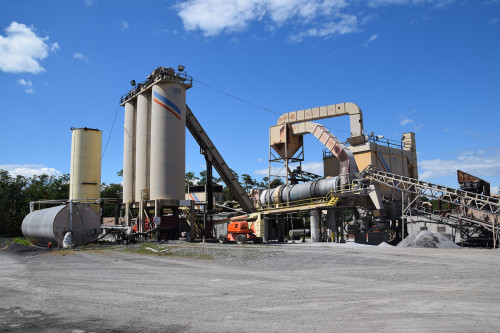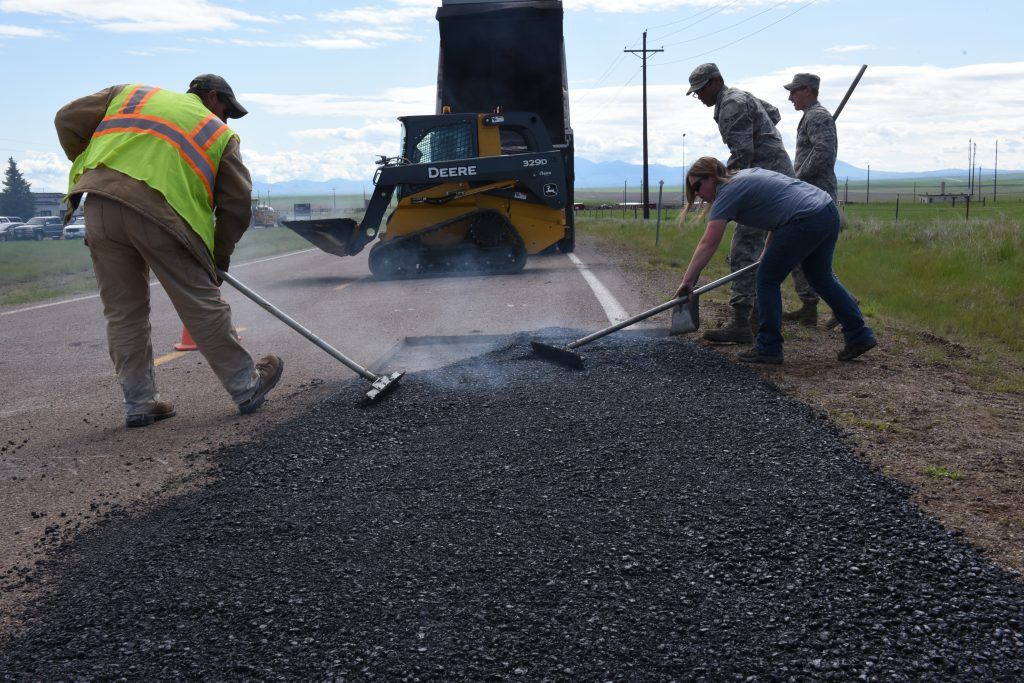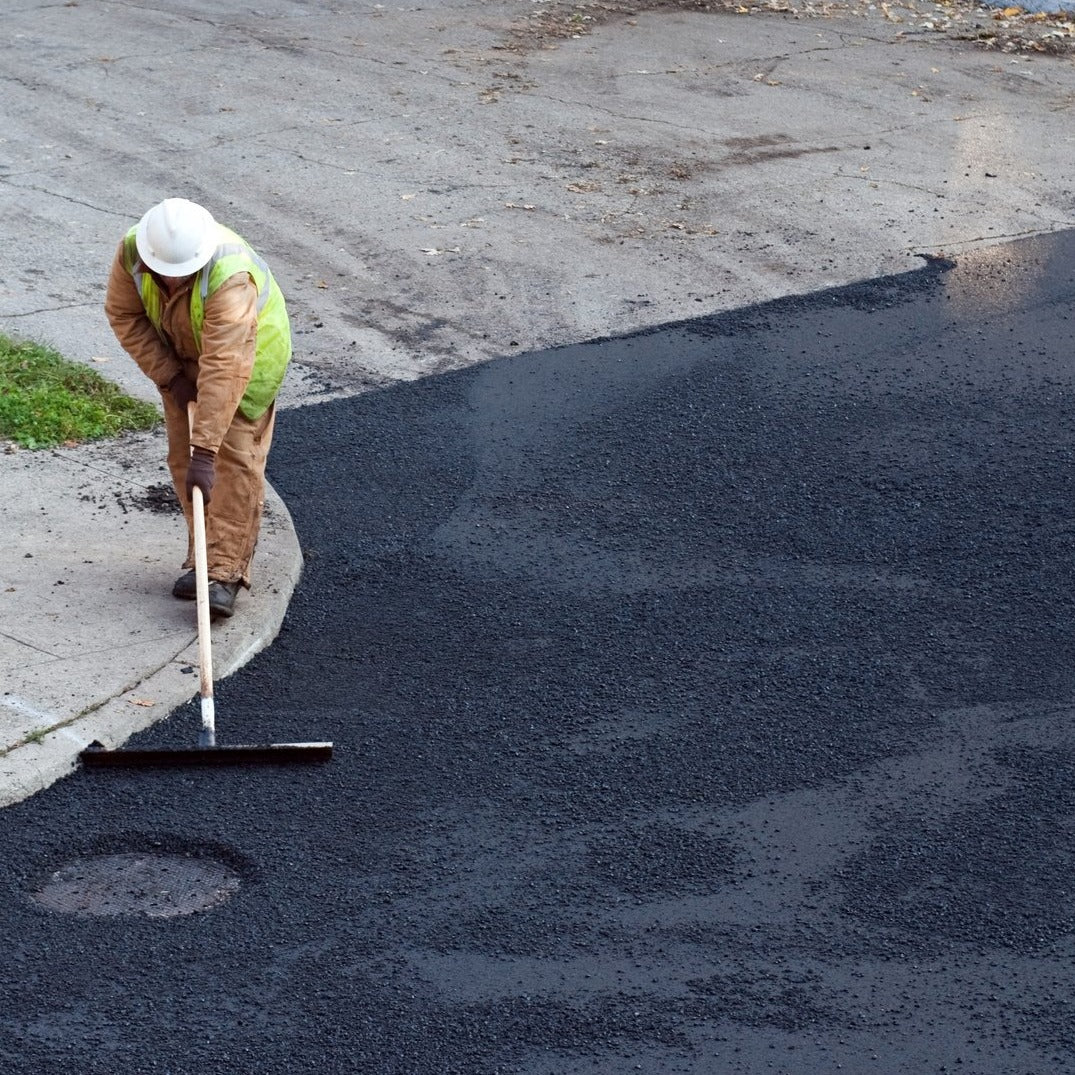Hot Mix Asphalt: The Structure for Safe and Secure Angled Parking Lots
Hot Mix Asphalt: The Structure for Safe and Secure Angled Parking Lots
Blog Article
Opening the Tricks of Warm Mix Asphalt Modern Technology
Exploring the depths of hot mix asphalt technology uncovers a world where accurate formulas and careful processes assemble to shape our roads and infrastructure. The fusion of fillers, accumulations, and binders isn't simply a building task however a calculated orchestration of longevity and performance. As we peer right into the complex dance of components, a tapestry of resilience and sustainability unravels. What exists underneath this surface of asphaltic mastery, and what keys wait to be revealed in the realm of leading technologies?
Relevance of Hot Mix Asphalt
Warm Mix Asphalt plays a vital role in modern-day infrastructure growth due to its longevity and cost-effectiveness. As the most generally utilized leading material for roads, freeways, and vehicle parking whole lots, Hot Mix Asphalt uses a variety of benefits that add to its importance in building tasks. One crucial benefit is its ability to stand up to rush hour lots and severe climate conditions, offering a durable and dependable surface area for transport networks. Additionally, Hot Mix Asphalt is economical in both first construction and long-lasting maintenance, making it a recommended choice for numerous facilities tasks.
The resilience of Hot Mix Asphalt stems from its make-up, which includes accumulations, binder, and filler products that are thoroughly picked and mixed to meet details performance requirements. Overall, the relevance of Hot Mix Asphalt in infrastructure advancement can not be understated, as it proceeds to be a foundation of modern-day building techniques.
Parts of Asphalt Mixes
The structure of asphalt blends is composed of thoroughly chosen accumulations, binder, and filler products that are important for accomplishing details efficiency needs. Aggregates are the primary component of asphalt mixes, offering stamina and stability. The binder, normally asphalt or asphalt concrete, holds the aggregates together and offers adaptability and toughness to the mix.
The mix and percentage of these parts play a significant role in identifying the high quality and performance of the asphalt mix. Engineers thoroughly create the mix to satisfy certain needs, taking into consideration variables like website traffic quantity, environment problems, and pavement life expectancy. Appropriate option and harmonizing of accumulations, binder, and fillers are important for creating resilient, long-lasting asphalt pavements.
Mixing and Production Methods

When the accumulations are chosen, the binder, commonly asphalt concrete, is included to bind the products with each other. The binder's linked here top quality and amount significantly impact the mix's strength, flexibility, and resistance to ecological aspects. Furthermore, fillers like moisturized lime or Portland concrete might be integrated to improve particular qualities of the asphalt mix, such as its workability or moisture resistance.
During manufacturing, the accumulations and binder are heated up, usually between 250-325 ° F(121-163 ° C ), to facilitate blending and make sure appropriate covering of the aggregates. The blending process should be comprehensive to attain an uniform mix that promotes the wanted efficiency qualities of the asphalt. Numerous strategies, such as batch blending Read Full Article or drum mixing, are employed to attain constant and top quality asphalt mixes for construction jobs.
Elements Influencing Asphalt Efficiency
Variables influencing asphalt performance incorporate a range of variables that affect the durability, durability, and general top quality of asphalt pavements. One essential aspect is the top quality of materials utilized in the asphalt mix.

Style factors to consider, such as sidewalk density and water drainage, are important in guaranteeing the long-lasting efficiency of the read asphalt sidewalk. By meticulously considering these service providers, designers and aspects can maximize asphalt efficiency and improve the service life of pavements.
Sustainable Practices in Asphalt Technology

WMA enables for the production and placement of asphalt blends at lower temperatures contrasted to standard hot-mix asphalt, resulting in decreased power usage and greenhouse gas discharges. The use of porous asphalt mixes can assist reduce stormwater overflow problems by enabling water to infiltrate with the pavement and into the ground, advertising all-natural water filtration and reenergize processes.
Verdict
To conclude, warm mix asphalt modern technology plays a crucial function in modern-day infrastructure development because of its durability and cost-effectiveness. By meticulously stabilizing elements, using proper mixing methods, and thinking about numerous factors, designers can develop premium asphalt mixes that hold up against rush hour lots and extreme climate condition. Accepting lasting techniques, such as making use of recycled materials and warm-mix innovations, even more boosts the ecological kindness of asphalt technology.
Mixing and manufacturing techniques in warm mix asphalt modern technology include the exact combination and handling of accumulations, binder, and fillers to produce a high-performance and sturdy asphalt mix.Variables influencing asphalt efficiency incorporate a range of variables that affect the sturdiness, durability, and overall top quality of asphalt sidewalks. Lasting techniques in asphalt modern technology encompass various campaigns aimed at decreasing the ecological influence of asphalt production and paving procedures. By incorporating recovered asphalt pavement (RAP) and recycled asphalt shingles (RAS) right into new asphalt mixes, the market can substantially lower the consumption of raw materials and power, while also decreasing garbage dump waste.
WMA permits for the manufacturing and positioning of asphalt blends at reduced temperatures compared to typical hot-mix asphalt, resulting in decreased energy usage and greenhouse gas discharges.
Report this page